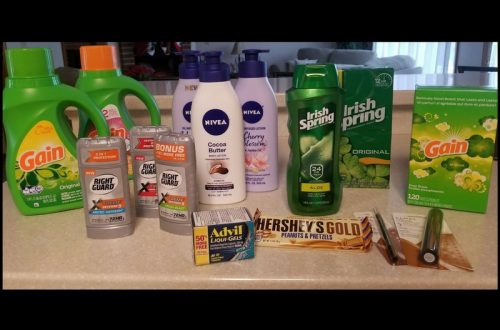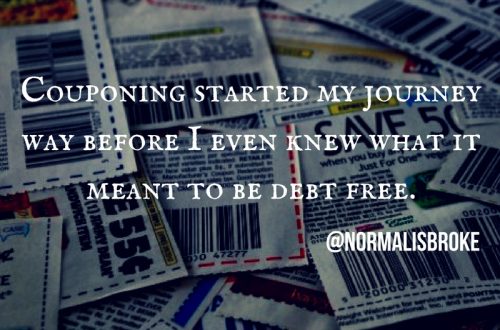Couponing Basics
Before we delve into the details, it is best that we cover the basics of couponing, just in case this is your first time. I remember when I first started, I was so overwhelmed by all of the acronyms and terms that I almost quit and I definitely don’t want that to happen to you.
Of course you understand the concept of a coupon, however, did you know that there are different types of coupons?

Manufacturer’s Coupons
This is the most common type of coupon and is what you will find in your Sunday paper. These coupons come directly from the manufacturer and typically are for a certain item or group of items. Manufacturer coupons are generally accepted at most stores that accept coupons. These can be found all over the place including:
Inserts: Also know as the coupon booklets that come in the Sunday paper.
Peelies: The coupons that are attached to the product in the store and can be “peeled” off. Now you can’t just go and peel them off all every single product on the shelf. They are meant for the person who will actually buy that product, not for the coupon hog that finds them all first.
Hangtags: Also found in attached to the product and usually are a tag that hangs (someone got really creative) Same rules apply…leave them for the person buying the product.
Blinkies: These are the coupons that come out of the machines on the aisles with the blinking light. Be nice and leave some behind for your couponing friends who will come behind you. It’s only right.
Catalina: This is the coupon that prints out of the register when you check out. This gets its name from the name of the printer, a catalina machine (bet that one threw you off.)
Internet Printables (or IPs): These are coupons that (you guessed it) are printed from the internet! (Are you sure you haven’t done this before?)
Digital Coupons (Load2Card): These are coupons found either on the website or app of a specific store such as Kroger. This allows you to load digital coupons to your loyalty card which will be applied automatically at checkout.

Store Coupons
Unlike manufacturer’s coupons, store coupons can only be used at a particular store or chain of stores. These coupons can be found in the store ads, on the website or store app, or they may be mailed/emailed to you if you are on their list. (This is why it pays to sign up for the mailing lists of stores that you frequent often.) These coupons may be for specific items, categories of items or even a set amount off your entire order (which is my favorite!) Many stores like Target and Rite Aid, will let you stack a store coupon with a manufacturer coupon! Extra savings is always a good thing.
Rebate Coupons
This used to be exclusive to the “You buy it, you send in the UPC, you get money back” process however technology has revitalized this area of couponing. There are now multiple rebate apps in which you add items to a list, you buy them from any of the listed stores, you scan your receipt and the UPC and it adds the rebate to your account. It is much cleaner and easier than the normal rebate process and has become widely popular. We will go into the specifics of the apps in the “Couponing: Apps, Apps, Apps” post.
Now that we have that out of the way, let’s talk about some of the ways that you can make these coupons work, work, work, work (in my best Rihanna voice) for you.

Double Coupons
There are a handful of grocery chains that double coupons which means they will give you twice the face value of the coupon. This means that a coupon normally worth 75 cents will now be worth $1.50. The stores in my local area that allow doubling have policies that limit the face value of the coupon to 99 cents and only allow 20 coupons per day. This may vary by the grocery chain.
Bonus: Some stores also have special events where they will either increase the maximum face value of the coupon ($1.98 instead of 99 cents) or they will triple the face value of the coupon! Score!

Stacking
I talked about this a tad bit earlier. Stacking is when you use more than one deal or coupon at a time. This can really save you quite a bit when done properly. An example of this is if you have a manufacturer’s coupon for a bottle of body wash and there is a store coupon loaded to your card and you have a catalina for $10 off any purchase of $50. As long as you buy the correct body wash and spend over $50, you can use all 3 coupons. Not all stores allow this so be sure to check the policies before you shop.
The absolute best way to get deals that make a dent in your budget is to use coupons on items that are already on sale. This allows you to put an extra discount on an already discounted item. Almost every store lets you do this until the coupon specifies that it can only be used on regular priced items, like the weekly A.C. Moore 50% off one item coupons. Throughout this series on couponing, we will delve more on the details of matching up deals with coupons for the ultimate win, so stay tuned and be prepared to save!





